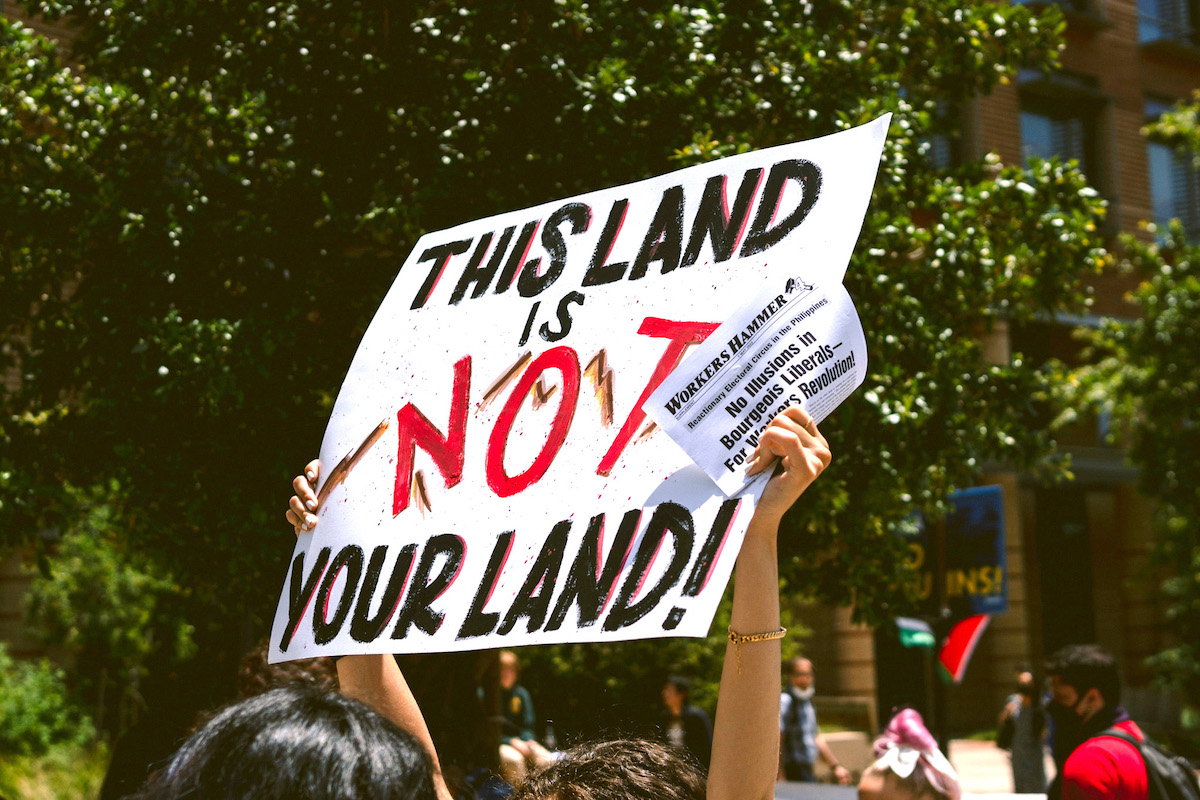Henry Yang’s Thirty Meter Telescope Meets New Managers and Longtime Protesters
UC Regents’ Mauna Kea Project Reaches $2.6 Billion with Construction Stalled

The UC Board of Regents meet this Tuesday, and though the controversial Thirty Meter Telescope (TMT) in Hawai’i isn’t on the agenda, five student advocates intend to insist that the board abandon the $2.6 billion project. The regents are among an international group sponsoring the telescope located high on Mauna Kea, a culturally and environmentally important peak to native Hawaiians. Chairing the board for the TMT International Observatory is Henry Yang, the chancellor at UC Santa Barbara, where the student group Mauna Kea Protectors is dedicated to stopping the telescope project.

The UC and its boardmembers usually keep a tight lid on the project, but students like Mariela Vasquez from Mauna Kea Protectors at UC Santa Barbara want to tell them how wrong they are. “They say, ‘Oh, it’s just one more telescope’ like it excuses the continued abuse of Indigenous people,” Vasquez said during a recent presentation.
The Mauna Kea Protectors — which also formed at UCLA and UC Berkeley — are backed by the UC Student Association’s first campaign for “Students Enacting Environmental Defense.” Though they are petitioning against the telescope and surveying ways to reinvest the funds in Indigenous communities, it could be all for naught. The University of California is required to contribute $107,223,485 from 2014 to 2024, UCSB’s student-run newspaper the Daily Nexus reported.
As of 2020, the UC had already invested over $68 million in the telescope that will be joining the other 13 already atop the mountain. For astrophysicists, the Thirty Meter Telescope (TMT) is a next-generation instrument with which to explore the first sources of light and heavy elements, black holes, and extrasolar planets along with their formation processes, the TMT website states.

Caltech partnered with the University of California 23 years ago to plan the premier telescope. They were joined by the Gordon and Betty Moore Foundation in 2003; Japan, China, India, and Canada also have a stake in the project. It’s an exciting prospect for astronomers like Lisa Storrie-Lombardi, who said that TMT “opens up a new parameter space that we can’t get with 10-meter-class telescopes on the ground.” Storrie-Lombardi directs Las Cumbres Observatory, an international network of telescopes headquartered in Goleta.
Though the Hawaiian telescope has been surrounded by controversy, Lombardi said it is a necessary next step, regardless of size or cost. “They want to move to something that is not just a little bit better than the big facilities we have now,” Lombardi said. “You want the move to an order of better magnitude.”
Hawaiians see it differently. Construction halted in early April 2015 when hundreds of protestors blocked workers from traveling up the mountain, resulting in 31 people being arrested. Protests have continued since, even drawing celebrity support from Dwayne “The Rock” Johnson, Bruno Mars, and Jason Momoa.
“The land is your family and Mauna Kea is the ancestor,” said Vero Caveroegusquiza, who chairs Mauna Kea Protectors at UCSB. They explained the volcano is a sacred religious site known as the piko, or the umbilical cord that connects the earth and sky. The summit is called Wao Akua — “the place where the gods reside” — and is seen as a place where humans don’t belong.


Renderings of the completed Thirty Meter Telescope | Credit: Wikimedia Commons
But since 1968, there have been people atop the mountain every day under the management of the University of Hawai’i. Because of the surrounding controversy, the university’s management has been evaluated several times by the Department of Land and Natural Resources and found to be deficient. An independent report by the department in 2020 found that the U of Hawai’i managers had left Mauna Kea’s cultural significance unrecognized and ignored “the rights of native Hawaiian cultural and religious practitioners.” The managers were also found to have “a lack of genuine community engagement and cultural education.”
Citing the finding of a lack of integrity in the management’s reporting, a new law approved by then-Hawai’i Governor David Ige in June 2022 appointed an oversight board to take over from the U of Hawai’i. That board — the Mauna Kea Stewardship Oversight Authority — started its work this July, and it will be completely in charge by 2028 after a five-year transition period.
The University of Hawai’i’s president, David Lassner, acknowledged the mismanagement and stated he would make the transition an easy one. This was a welcome change for astronomers like Lombardi, who are ready for the more than decade-long wait to be over. For students Vasquez and Caveroegusquiza, the struggle continues.
Protesters continue to support the indigenous Hawaiians’ objections to having even more construction take place high atop a sacred site. “We’ve continued to be ignored; we’ve continued to be snubbed,” Caveroegusquiza said. “Even when we’re able to get promises and talks from regents behind closed doors, they almost never come out openly in support of us.”
Correction: The words kanaka maoli in an earlier version of this story mean “native person,” not the name of the volcano as a religious site; the correct term is “piko.”



You must be logged in to post a comment.